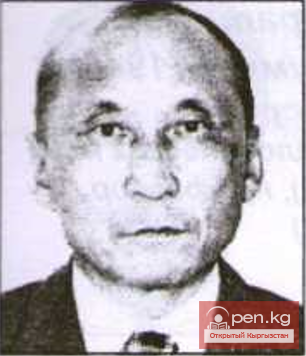
The small form of the medal today, alongside psychological depth and strictness of form, is also characterized by features of monumentalism, poster-like sharpness of thought, and bright decorativeness. All these tendencies, with their positive and negative aspects, are to some extent inherent in the developing medal art of Kyrgyzstan. Going beyond the realm of commemorative and anniversary medals, Kyrgyz medal artists widely explore a variety of themes, employing modern techniques, plastic metaphors, and often in the heat of experimental form creation, blend the medal with the genre of plaque or plastic, sometimes almost three-dimensional, miniatures of various shapes, which is particularly characteristic of V. Kopotev.
V. Kopotev, as a medal artist, is distinguished by his passion for his work, interest in historical and contemporary themes, active search for expressive compositional solutions, and broad erudition. Kopotev's works have represented Kyrgyz medal art at the International Exhibition-Competition "Revival of the Medal" in France (1974) and the XVI Congress of FIDEM (Poland-1975), as well as at the II All-Union Exhibition of Medals and All-Union Exhibitions of Small Form Sculpture. From his early creative steps, he successfully developed themes of ancient culture of Kyrgyzstan in series and individual medals — the medal "Choro - Warrior of Manas" (1972, bronze), the series "Applied Arts of Kyrgyzstan" (1972, aluminum), the series "Stone Idols" (1973, bronze), "Ancient Monuments of Kyrgyz Culture" (1973, bronze), "Burana Tower" (1975, terracotta). In these works, marked by a diploma from the Union of Artists of the USSR, the author demonstrated knowledge of the theme, compositional inventiveness, and a sense of decorative expressiveness of form.
Kopotev has repeatedly and successfully tackled commissioned commemorative medals in honor of anniversary dates. Such medals include "50 Years to Soviet Kyrgyzstan" (1973, bronze, with the participation of A. Solovyov, minted at the Moscow Mint), "100 Years to the City of Frunze" (1978, bronze, minted at the Leningrad Mint), "60 Years of the Kyrgyz SSR and the Communist Party of Kyrgyzstan" (1984, bronze). He created a gold medal for the laureate of the State Prize of the Kyrgyz SSR in the field of science and technology (1974). These works are distinguished by a high level of professional culture.
Kopotev has repeatedly addressed the theme of historical-revolutionary events, creating a series of medals in honor of outstanding figures and events of the revolutionary era (90 years since the birth of M. V. Frunze, 1970, bronze), the series "The First Lenin Decrees" (1977, brass). A significant place in his work is occupied by the theme of the Great Patriotic War. Such medals as "35 Years of the Panfilov Heroes" (1974, bronze) and "From the Soviet Information Bureau" (1977, bronze) have been widely exhibited. For the 40th anniversary of the Great Victory, he created a double-sided medal "Our Cause is Just" (1985, bronze) and an anti-war themed medal "Peace on the Brink" (1985, bronze), where the three-dimensional form of an hourglass is played out with poster-like expressiveness.
The genre-lyrical line of Kopotev's medal art is represented by series of medals or rather miniature reliefs "Harvest" (1915, bronze), "Lyric Song" (1976, bronze), individual medals "My Little Poplar in a Red Scarf" (1976, bronze) and "Jamilya" (1977, bronze) based on the eponymous stories by Ch. Aitmatov, "My City" (1978, metal). Many of Kopotev's medals are marked by a departure from classical principles of medal form construction, with free composition and modeling. Among his significant works are the medals "600 Years of the Kulikovo Battle" (1980, bronze), as well as the medals "Balasagun," "Riga," "Bukhara," "Khiva" from the series "Protection of Cultural Monuments" (1983, bronze). In the best medals, Kopotev achieves clarity in expressing ideas, artistic completeness, reflected in the harmonious subordination of the parts of the composition, the obverse and reverse sides, the silhouette of the medal, and such components of form as the height of relief, texture, and color.














































